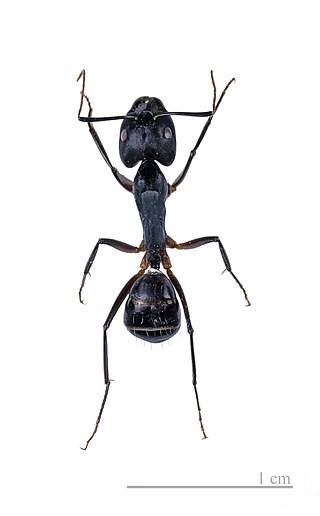
The Formicinae are a subfamily within the Formicidae containing ants of moderate evolutionary development.
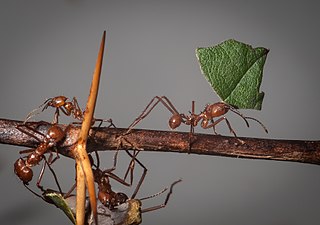
Myrmicinae is a subfamily of ants, with about 140 extant genera; their distribution is cosmopolitan. The pupae lack cocoons. Some species retain a functional sting. The petioles of Myrmicinae consist of two nodes. The nests are permanent and in soil, rotting wood, under stones, or in trees.

Strongylognathus is a genus of ants in the subfamily Myrmicinae. Many of its species are endemic to specific regions.

Diacamma is a genus of queenless ants belonging to the subfamily Ponerinae. It is distributed from India to Australia and contains about 24 species.

Myopias is a genus of ants in the subfamily Ponerinae. The genus is known from the Oriental, Indo-Australian, and Australasian regions.
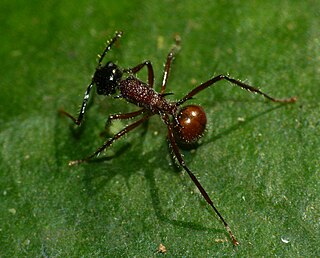
Polyrhachis is a genus of formicine ants found in the Old World with over 600 species. The genus is yet to be comprehensively resolved and contains many varied species including nest-weavers, swimming workers, soil and tree-dwellers. The first fossil record of this genus was of Polyrhachis annosa from the Miocene.

Prionopelta is a genus of ants in the subfamily Amblyoponinae. Of its 15 species, four are known from Africa, five from the Americas and six from the Indo-Pacific region.

Lordomyrma is a genus of ants in the subfamily Myrmicinae.

Ooceraea is a genus of ants in the subfamily Dorylinae containing approximately 16 described species. The genus is distributed across the Australasia, Indomalaya, Malagasy, Neotropical, Oceania, and Palearctic bioregions. Ooceraea was described by Roger (1862) and later placed as a junior synonym of Cerapachys by Brown (1973). Ooceraea was resurrected as a valid genus by Borowiec (2016) during redescription of the doryline genera.
Polyrhachis exercita is a species of ant in the subfamily Formicinae, found in India, Sri Lanka, and Bangladesh.

Polyrhachis hippomanes is a species of ant in the subfamily Formicinae, found in Sri Lanka. Three subspecies are recognized. 2 subspecies were given full species status recently.
Polyrhachis horni is a species of ant in the subfamily Formicinae. It is found in India and Sri Lanka.
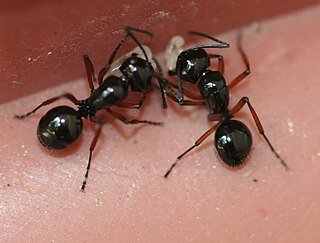
Polyrhachis rastellata is a species of ant in the subfamily Formicinae, found in few Asian countries. Two subspecies are recognized. Some texts include many more subspecies ranks. but it is debatable about these ranks. The following ten subspecies are according to Integrated Taxonomic Information System
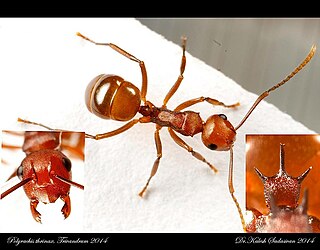
Polyrhachis thrinax is a species of ant in the subfamily Formicinae, found in many Asian countries. There are 6 or 7 subspecies recognized.
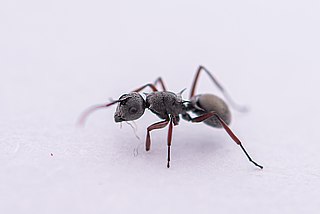
Polyrhachis tibialis is a species of ant in the subfamily Formicinae, found in many Asian countries. There are 10 subspecies recognized.













